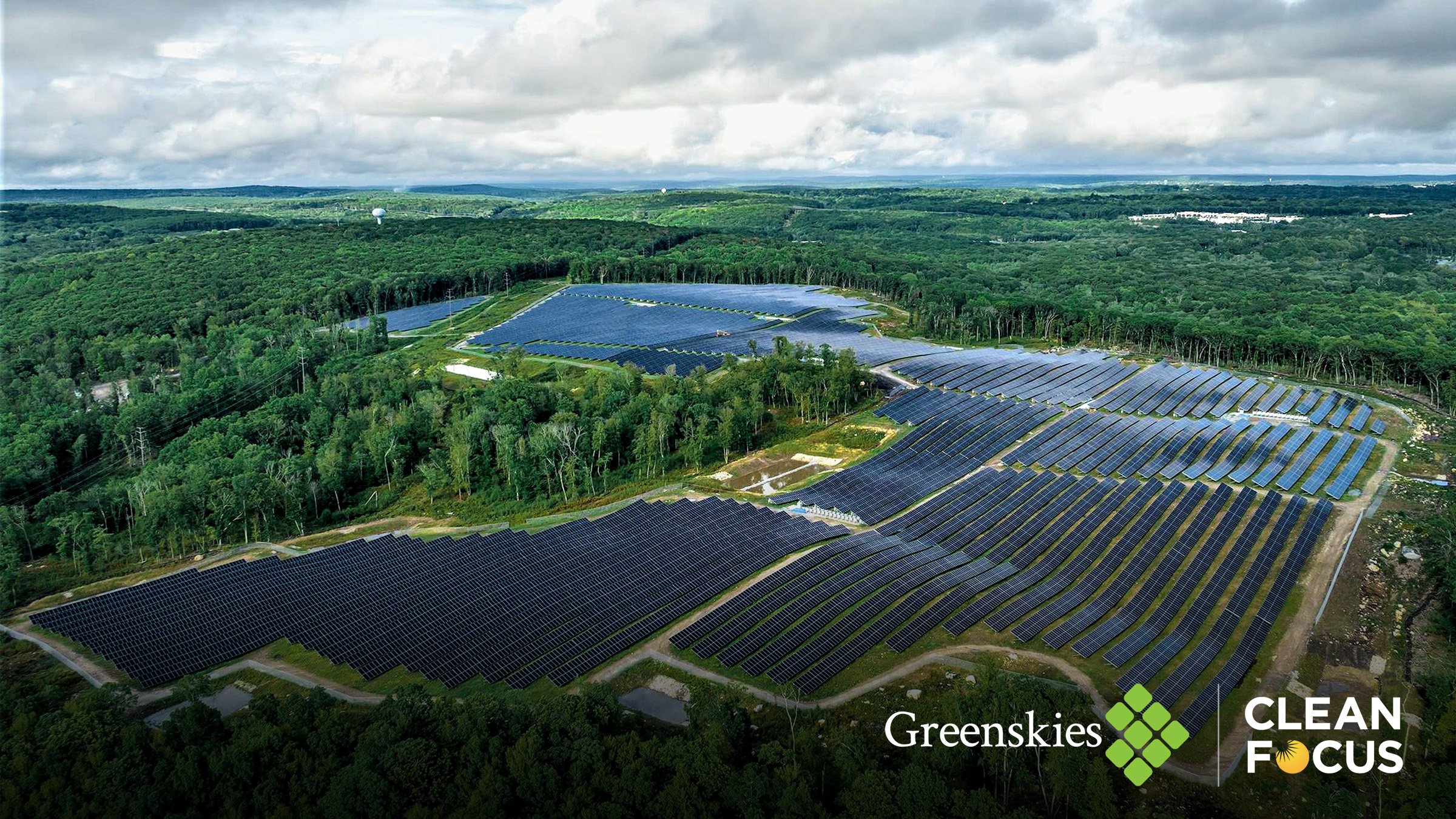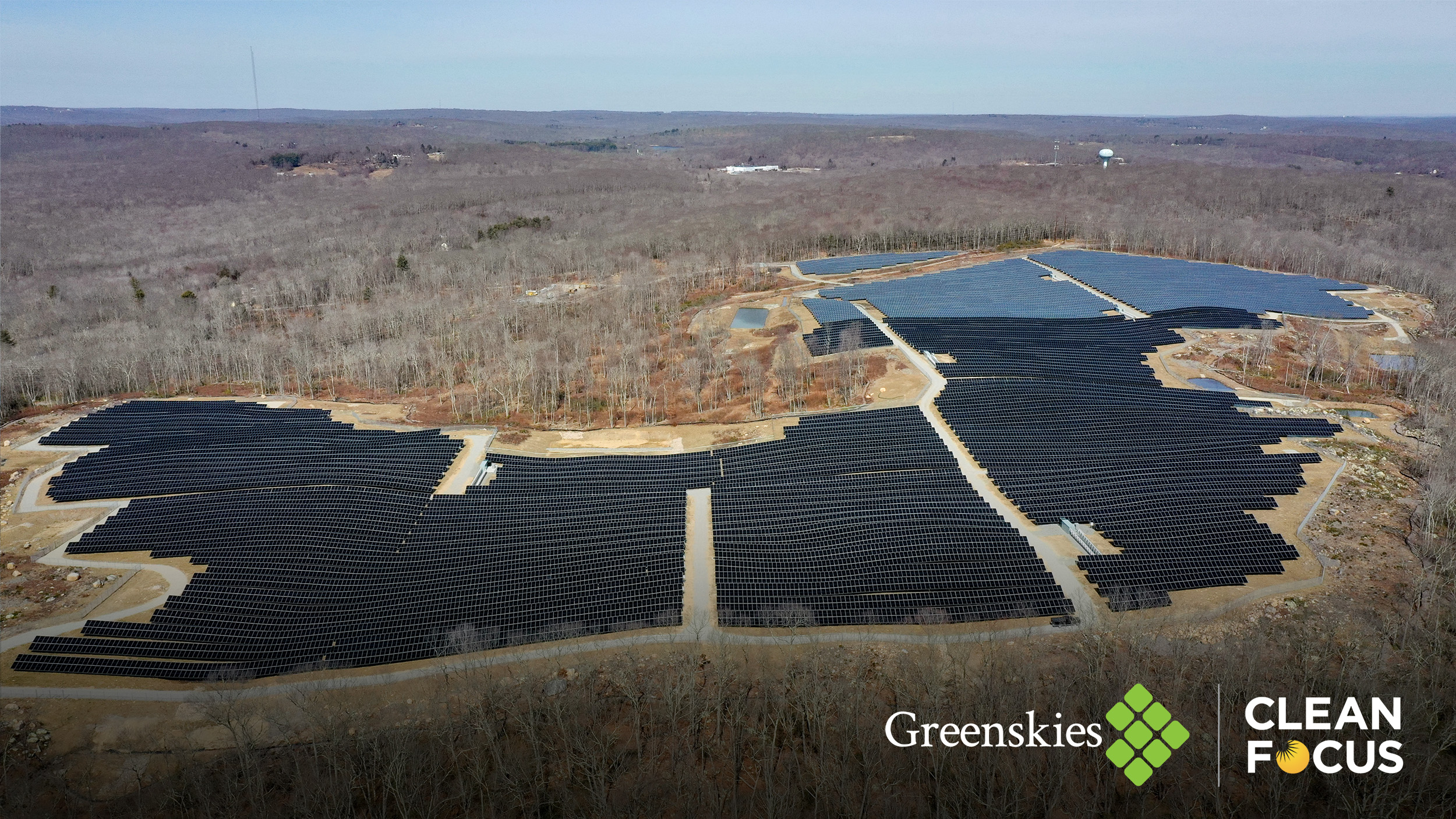How preventative maintenance keeps a Connecticut solar project running smoothly

Solar Power World | Billy Ludt
April 10, 2024
For solar projects to successfully operate beyond their warrantied lifespans, they must be built correctly and need to be faithfully maintained. Solar contractors that handle both construction and operations and maintenance (O&M) stay with a solar project for the long term to ensure the array is meeting all its milestones.
Greenskies Clean Focus, a Connecticut-based commercial and utility-scale developer, recently completed a solar project seven years in the making. The company’s in-house O&M arm is maintaining an 18.86-MW array in Waterford, Connecticut, that has some unique upkeep requirements.
“If you don’t have an active preventative maintenance program going around and looking at everything, you are going to have equipment failures, and they are going to be much more serious than if you had caught them in the act,” said Steve Martineau, Greenskies’ director of O&M.
The project, built on approximately 94 acres of hilly land, was interconnected in April 2023. Greenskies is checking the array monthly to keep it operating at its peak.
“It allows us to be proactive instead of reactive,” said Chip Florio, director of project delivery at Greenskies, of the regular maintenance tasks. “If we’re reactive to these problems, it means that we’re scrambling to send people out, and everything becomes a fire drill. Being proactive vs. reactive allows us to better manage it.”
Preventing downtime at the Waterford solar project
A solar project of this scale is on the larger side for Connecticut and the greater New England region. The array is divided into five subsystems with different topographical and shading considerations. The first starts at the highest elevation on the site and the remaining four subsystems follow the topography downhill and then up a proceeding hill. The site was previously heavily logged and some trees unfit for logging had to be removed by Greenskies.
Sections of the land are laden with rock, so Greenskies opted to use a ground screw foundation from APA Solar Racking to work in the less-than-ideal soil conditions. The array also used APA racking and a mix of HT-SAAE and Canadian Solar panels with Yaskawa Solectria string inverters.
Greenskies O&M teams focus on project monitoring and protective and corrective maintenance of solar arrays. Martineau said each crew informs the next department along the maintenance line to keep arrays online and operating in peak condition. On the Waterford project, and every other array under Greenskies’ purview, O&M crews monitor inverter performance and open each unit for inspection at least once a year.
“Everything flows from financial institutions. So, there’s certain expectations that your financing partners have of us in an O&M facility,” he said. “It’s a collection of preventative maintenance and corrective maintenance.”
Heat detection is crucial on electronic components like inverters and switchgears because it can indicate future electrical issues on an array. O&M crews also monitor high-value components like transformers, because one malfunction will cause substantial production losses and take a lot of time to replace.
“In general, your biggest pain points come from those items that have the longest lead times when they fail, so you pay the closest attention to them,” Martineau said.
Prior to interconnection, water breached one of the array’s combiner boxes. Luckily, installers managed to swap the component in time for energization, the ongoing issue of water at the site pertains more to its environment.

Greenskies had 15 stormwater basins dug out near the project to prevent erosion and water runoff. There are two rivers running near the project, increasing the risk of stormwater runoff entering local waterways.
To ensure the basins are working properly, they were inspected once a week during construction, and they’re now inspected once a month. This monthly inspection routine will last for two growing seasons following the project’s completion in 2023.
“Between the weekly, monthly, and post-construction inspections, stormwater and erosion control measures are frequently overseen by multiple parties to ensure all necessary compliance,” said Florio. “It’s definitely a topic of importance.”
In addition to stormwater concerns, there are two basins on site that are fenced in to prevent local amphibians from laying eggs within. These basins dry out in the early summer, so biologists will visit the project every March to relocate any amphibious eggs to safer ponds. A safety plan was also in place to work around an endangered snake species native to the area.
“Those are outside our normal electrical O&M on the systems, but they’re equally important,” Martineau said.
As an end-to-end solar developer and EPC contractor, Greenskies owns the projects it builds for the long term. Dedicating a segment of the company to O&M of arrays like the one in Waterford ensures inevitable hardware failures are addressed before they happen or before they’re a larger detriment to the system.
“O&M with Greenskies is a front-of-the-mind thought and not an afterthought,” Martineau said. “O&M gets a lot of input into our installation practices, which is a great place to be when you’re a company like us, because we’re not big, but we get a lot done.”